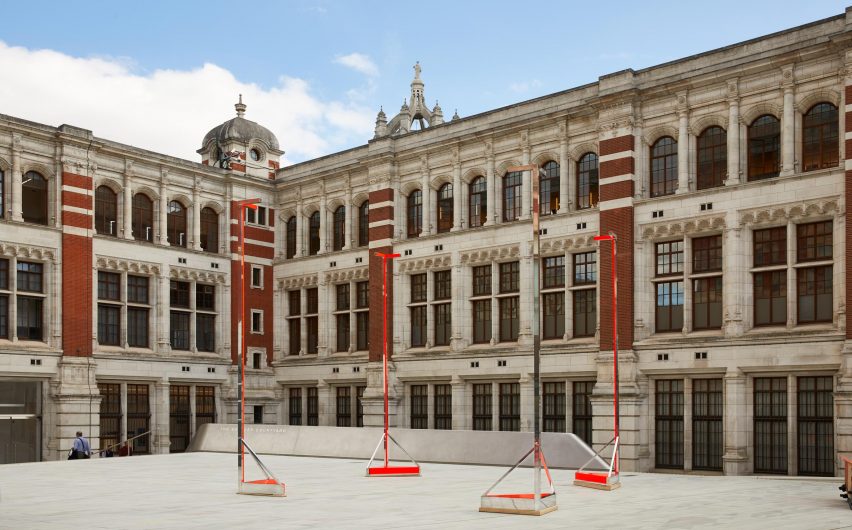The Non-Pavilion is a London Design Festival installation that barely exists, to make a statement that the world needs to produce less.
London-based offices Studio Micat, There Project and Proud Studio teamed up to create the unconventional pavilion, which is on show in the Sackler Courtyard of the V&A museum.
The project is intended to promote degrowth – an economic strategy bthat calls for a reduction in levels of consumerism and production. Its proponents believe it is be the only way that humanity can operate in symbiosis with the natural world and its resources.
The designers felt that an empty space, rather than a physical structure, was the most effective way to explain this concept.
"Obviously making something is very much the antithesis of what degrowth is about," said architect and Studio Micat cofounder Michael Garnett, speaking to journalists on a tour of the project.
"We're thinking of this in the spirit of the Emperor's New Clothes," he added. "We want people to marvel without there being anything there at all."
The Non-Pavilion is defined by four self-supporting corner poles, with mirror-clad exterior surfaces and neon red inner surfaces.
Studio Micat designed these to resemble baugespanne, which are erected in Switzerland to show the proposed outline of a future development that is waiting to receive planning permission.
"Baugespanne are used in Switzerland, whether for a rooftop extension or a multi-storey building, to essentially pre-visualise the impact that it will have on the surroundings," explained Garnett.
To bring the installation to life and to further explain the concept of degrowth, curatorial studio There Project and visualisation office Proud Studio have created six augmented-reality scenarios for the space.
Using a smartphone or tablet, visitors are able to see the Non-Pavilion take on different forms.
The Incredible Shrinking Man is based on a concept by Dutch artist Arne Hendriks, which suggests that, if we shrink humans down to an average height of 50 centimetres, we would only need around five per cent of the natural resources we use currently.
This AR scenario turns the space of the pavilion into a house that shrinks as you get closer to it.
Another of the six AR scenarios features The Impossible Hamster, a project that uses an ever-growing hamster to show how quickly things get out of hand in a system of exponential growth.
There's also a scenario that re-imagines the Bretton Woods Conference of 1944 – where global leaders established the financial system after world war two – taking place again, but on the International Space Station.
Another AR features an ever-growing hamster
"We're using design to talk about a really difficult topic, which is growth-driven economics and its impact on the environment," said curator and There Project co-founder Justine Boussard.
"Through the power of design, you can actually make these complex topics more palatable, more direct, and help people hopefully get interested in economics."
The Non-Pavilion is one of several installations on show at the V&A for London Design Festival 2019, which continues until 22 September. Others include projects by Sam Jacob and Kengo Kuma.
Photography is by Ed Reeve.

